You are now at the beginning of an exciting chapter in programming with Python. Already known from the world of functions, you will dive into the concepts of inner functions and closures. These techniques are not only important for problem-solving, but also enhance your skills in handling function references and scope in Python. Let's understand the basics together and explore their application in practice.
Key insights
- Inner functions allow you to define functions within other functions, simplifying the overview of variables and functionalities.
- Closures give you the ability to access variables in the outer scope even after the outer function has already completed.
- They are particularly useful for tasks such as debugging and the dependent behavior of functions.
Step-by-step guide
Definition of simple inner functions
Let's start with the basic idea of inner functions. Imagine you have an outer function that defines an inner function. This inner function receives parameters from its outer function.
In this example, the outer function calls the inner function and passes it the parameter x. This illustrates how parameters are passed through function calls.
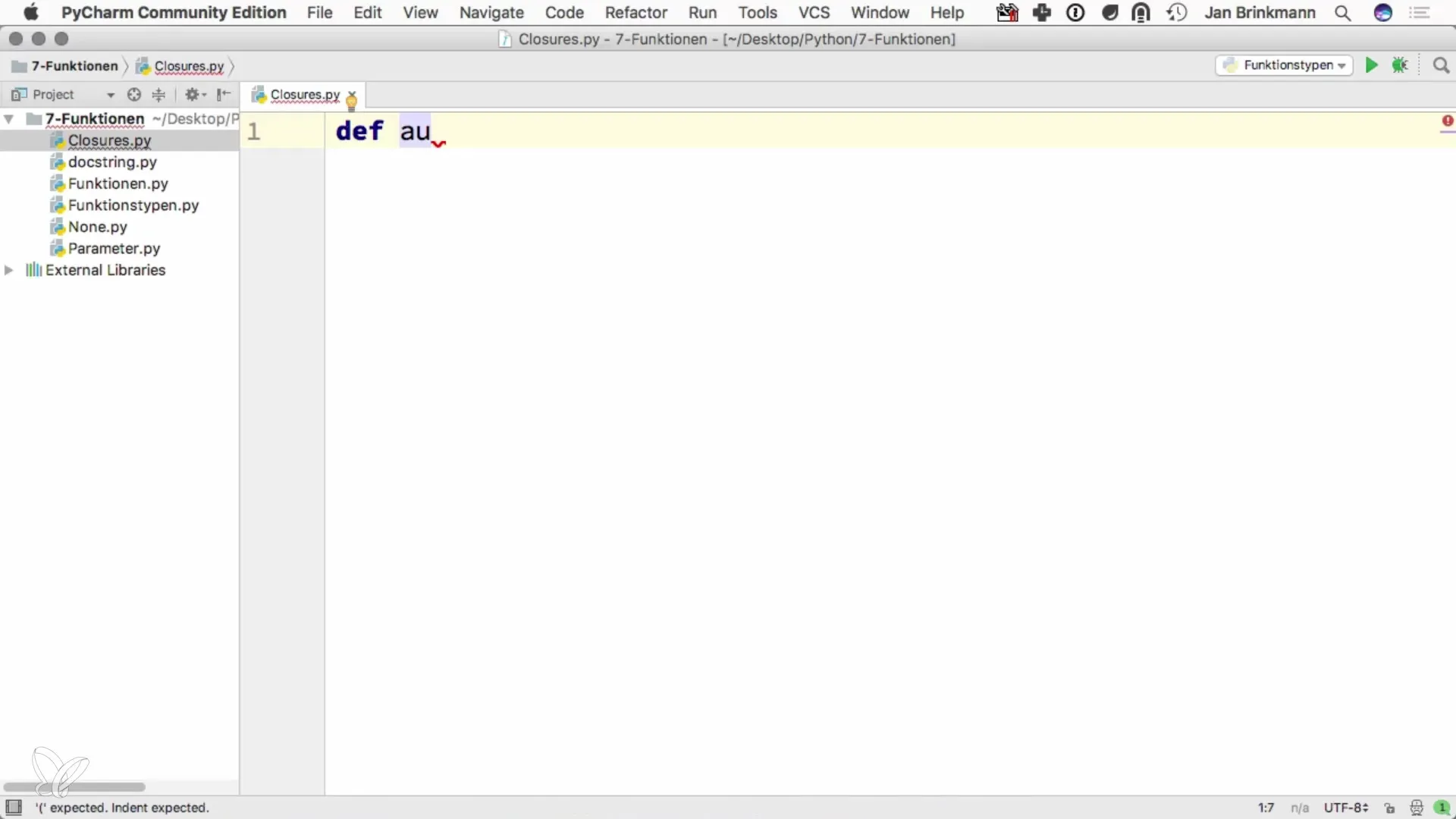
Benefits of inner functions
Here we define an inner function error_message that provides an error message in case of an error. This gives you a central point for error handling, which does not need to overload the outer logic.
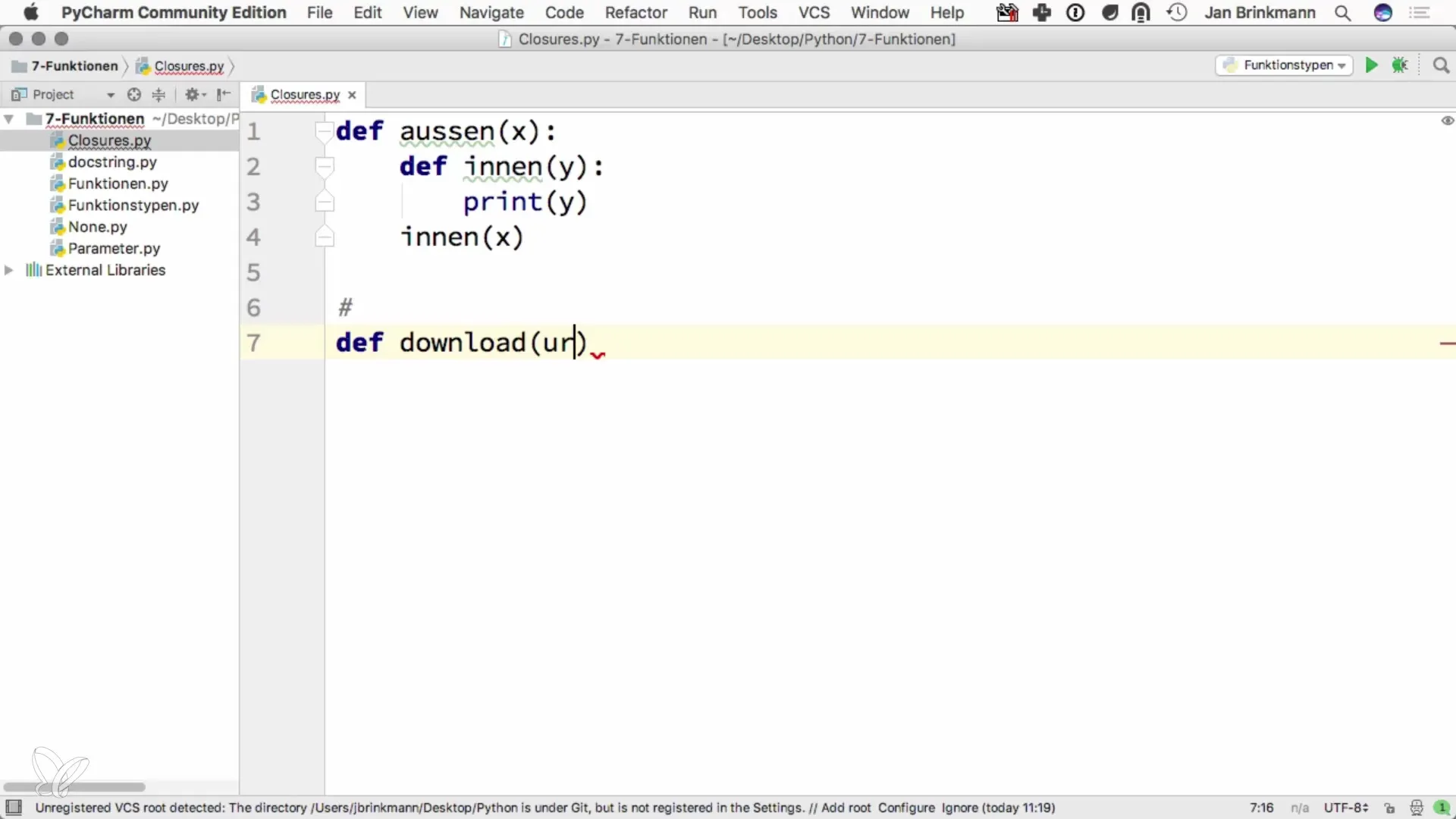
Introduction to Closures
Now let's move on to an exciting concept: closures. They allow access to variables of an outer function even after that function has already completed.
In this case, the greet function returns a reference to the inner function hello, which uses the name defined in the outer function.
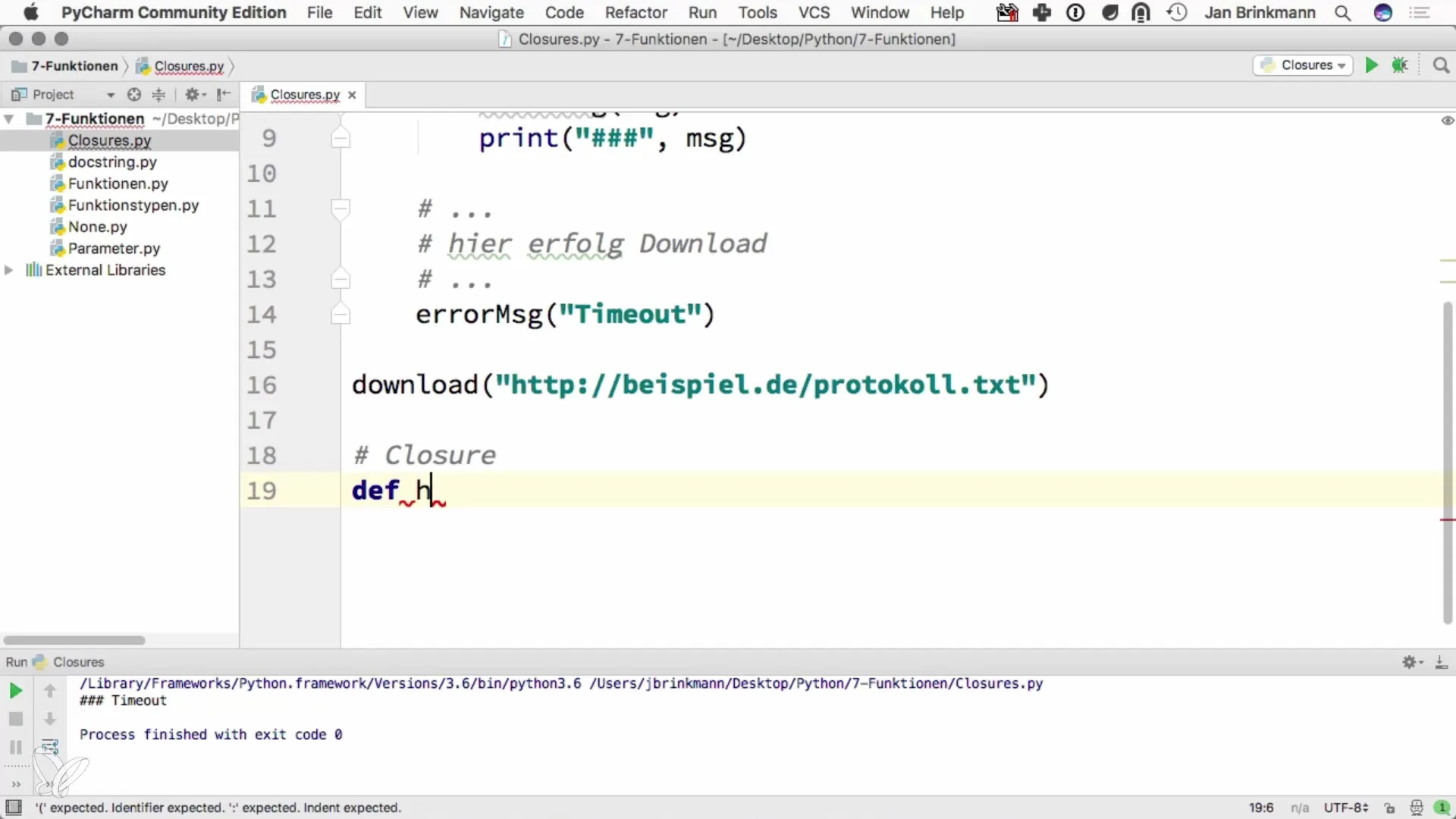
Application of Closures
Here we see that you can call hello_function after the outer function has already completed and still have access to the variable name. This opens many doors for designing functions that require flexible and explained access to data.
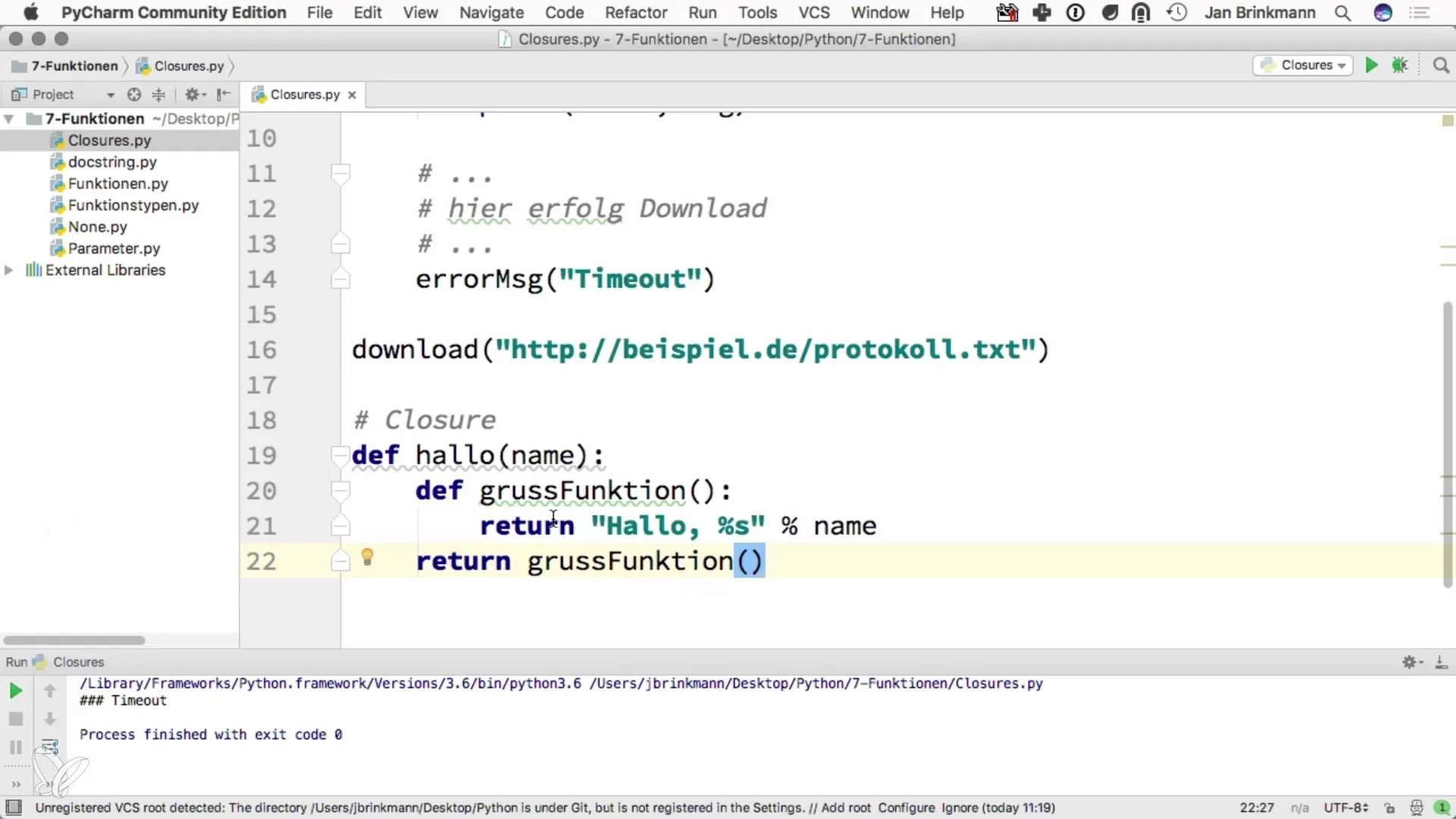
Combining inner functions and Closures
The combination of both concepts in your code can improve the readability and structure of your programs.
Here you can perform a multiplication that always accesses x and thus remains within the context of the outer function. You have not only inner functions here, but also the advantage of closures.
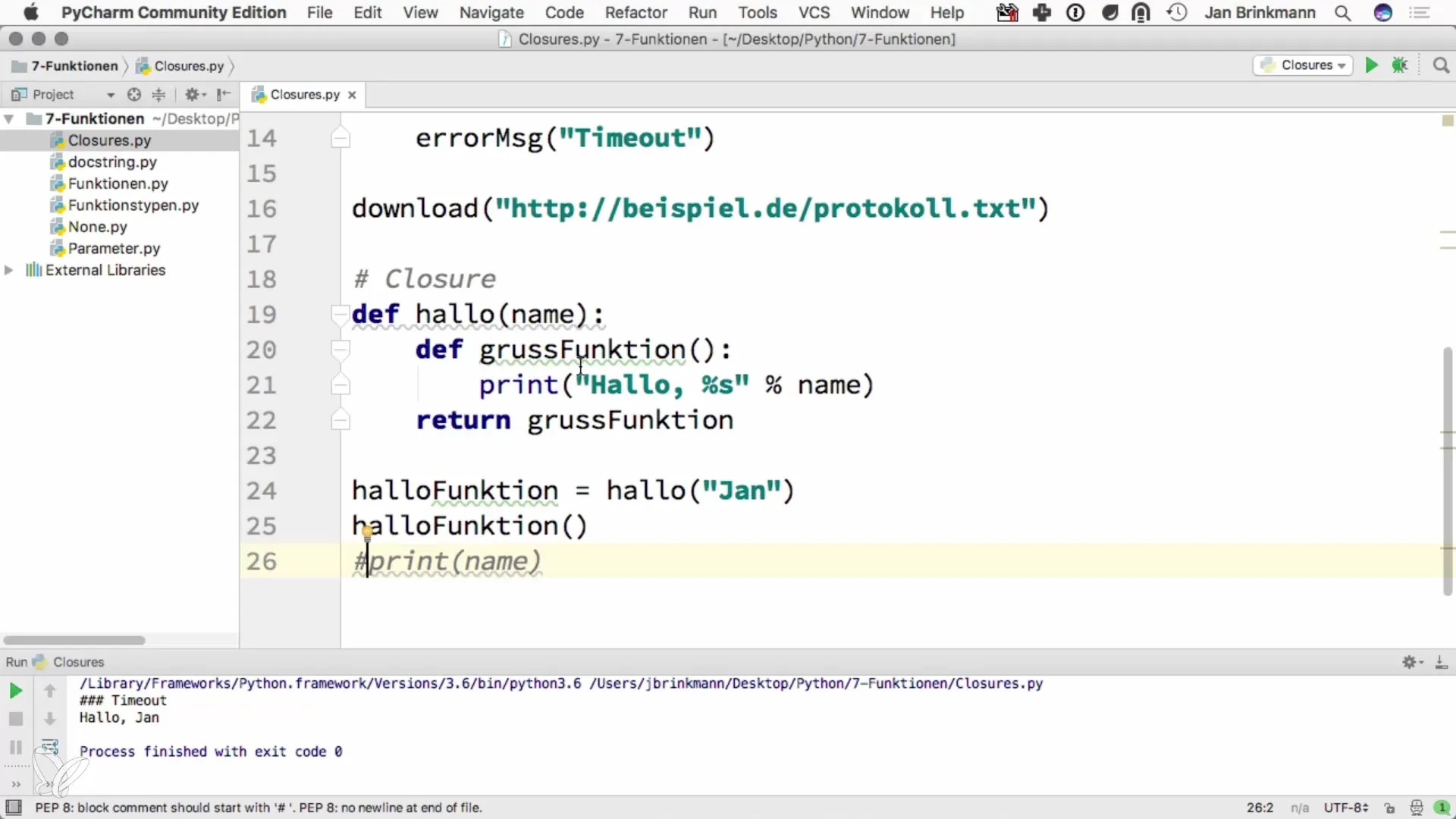
Summary – Inner Functions and Closures in Python
You have now learned the concepts of inner functions and closures in Python. You know how to define a function within a function, what advantages this brings, and how closures manage access to outer variables. This knowledge will help you create more elegant and feature-rich programs.
Frequently Asked Questions
What are inner functions?Inner functions are functions defined within other functions and can access their parameters and variables.
How do closures work?Closures allow an inner function to access variables from the outer function even after the outer function has been fully executed.
What are inner functions useful for?Inner functions are useful when you want to encapsulate logic or centralize repeated functions within a function.
Can I call an inner function outside the outer function?Yes, you can return an inner function and then call it, but you need to maintain a reference to it while the outer function is executing.
How do closures help with debugging?Closures allow the context of variables from an outer function to be retained, which can make debugging easier by keeping relevant information accessible.


